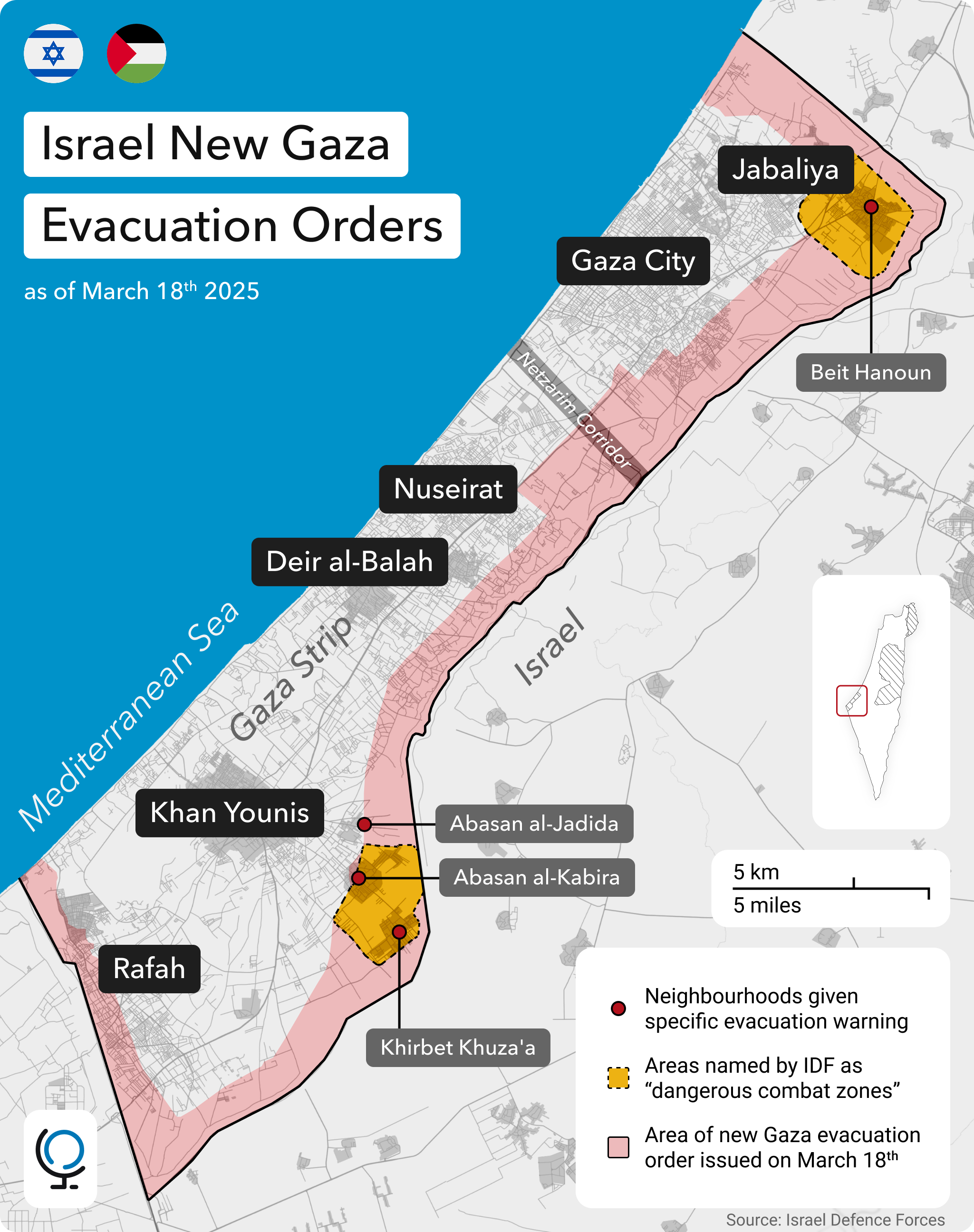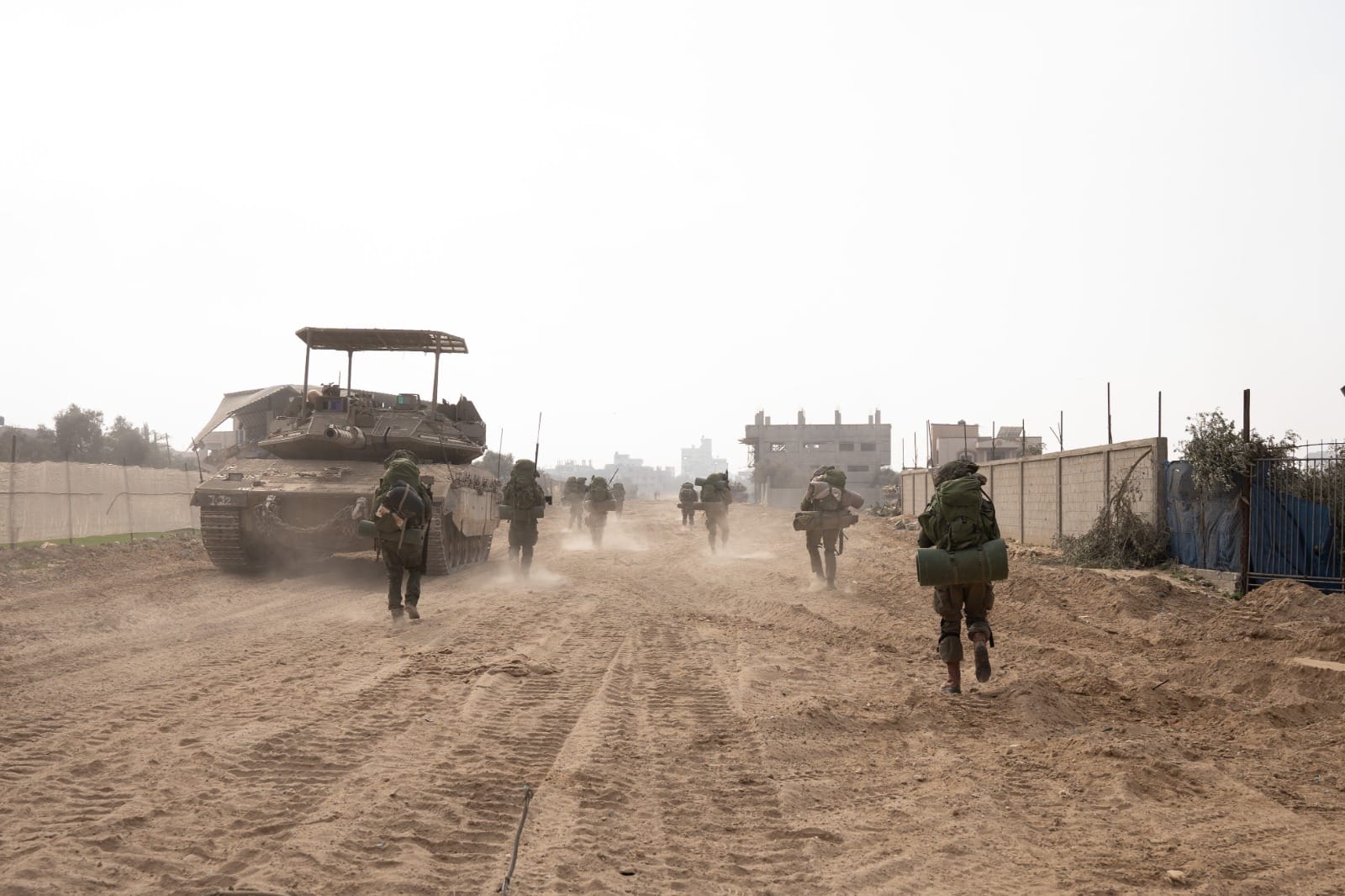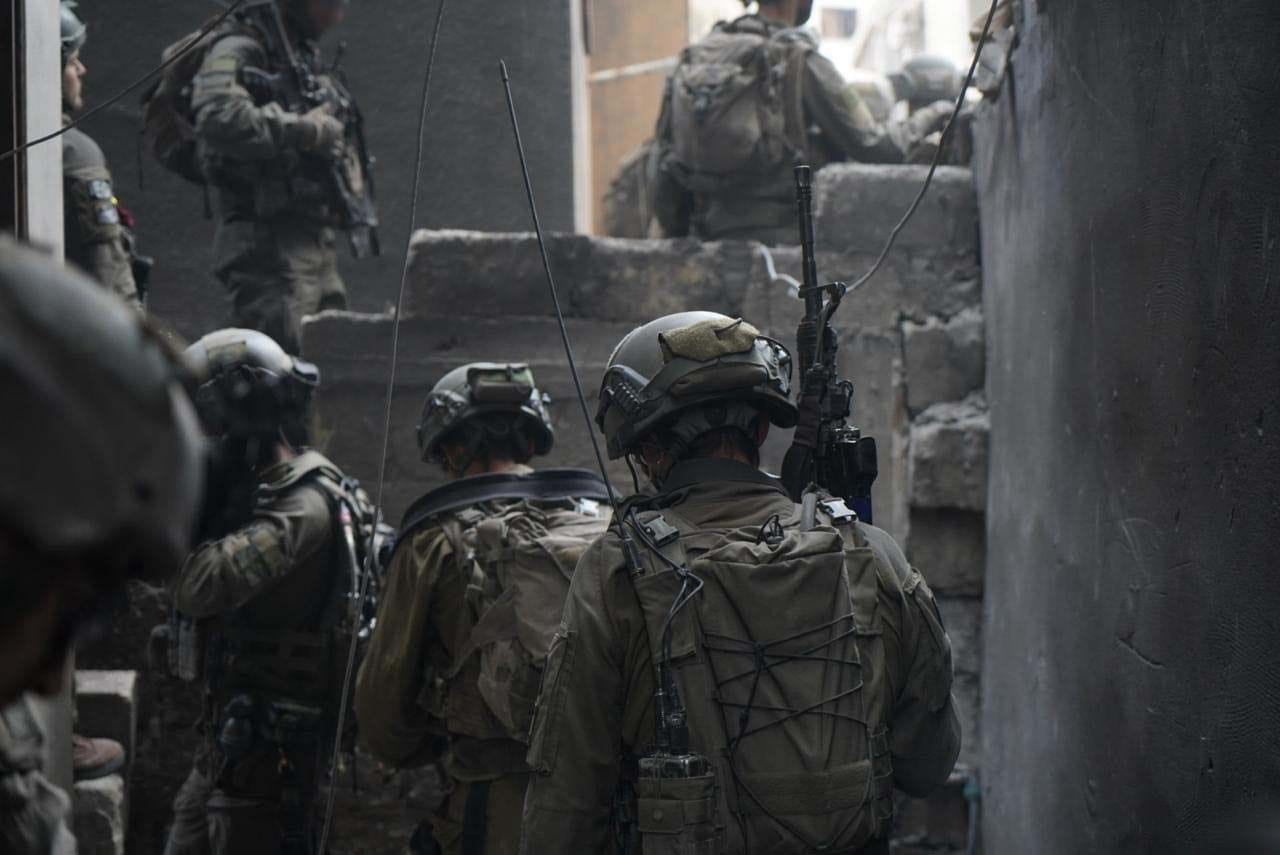

Situation Report
Following two months of relative peace, the fragile ceasefire between Israel and Hamas collapsed on March 18 following extensive Israeli airstrikes across Gaza. These attacks resulted in over 900 deaths and hundreds of injuries, marking one of the deadliest escalations since October 2023.
Palestinian officials report a death toll exceeding 50,000 due to the nearly 18-month conflict.
Israeli Prime Minister Benjamin Netanyahu ordered the strikes after Hamas refused Israeli demands to free half of the remaining hostages as a precondition for extending the ceasefire.
Netanyahu noted that the attack was “only the beginning” and that Israel would press ahead until it achieves all of its war aims — destroying Hamas and freeing all hostages held by the militant group.
On March 19, Israeli forces reoccupied the Netzarim Corridor—a strategic area that had previously divided Gaza into northern and southern zones—once again restricting movement for Palestinians and deepening the humanitarian crisis.
Israeli air strike kills top Hamas Official
An Israeli airstrike in southern Gaza killed a Hamas political leader, Salah al-Bardaweel, on Sunday Match 23rd, the militant group said.
Bardaweel was a member of the Hamas decision-making body, the political office, and had held posts such as heading the Hamas delegation for indirect truce talks with Israel in 2009 and led the group's media office in 2005.
Israeli Prime Minister Benjamin Netanyahu has repeatedly said the main aim of the war is to destroy Hamas as a military and governing entity.

Humanitarian Crisis Escalating
This escalation follows a two-week total blockade imposed by Israel starting March 2. The blockade has halted all humanitarian aid and commercial supplies from entering Gaza, leaving over two million residents in dire need of food, clean water, and medical assistance.
The United Nations’ humanitarian coordinator for the Occupied Palestinian Territory condemned this action as a violation of international law and stressed that lifesaving aid must resume immediately to prevent further deterioration.
The humanitarian situation is catastrophic with displacement being widespread tens of thousands have fled their homes following evacuation orders issued by Israeli forces targeting areas like North Gaza and Khan Younis. Economic losses are mounting as infrastructure crumbles under sustained bombardment.

Information from:
Israel Strikes Gaza After Ceasefire Collapse. CNN, March 17, 2025. Accessed March 23, 2025.
Israel Launches Ground Offensive in Gaza. CNN, March 19, 2025. Accessed March 23, 2025.
Hamas Fires Rockets at Israel Amid Renewed Conflict. CNN, March 20, 2025. Accessed March 23, 2025.
Gaza Conflict: Latest Updates. BBC, March 2025. Accessed March 23, 2025.
Israeli Airstrike Kills Hamas Political Leader in Southern Gaza. Reuters, March 22, 2025. Accessed March 23, 2025.
Israel Attack on Gaza Kills Hundreds. The New York Times, March 18, 2025. Accessed March 23, 2025.















Discussion